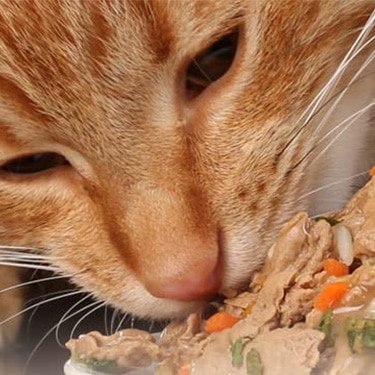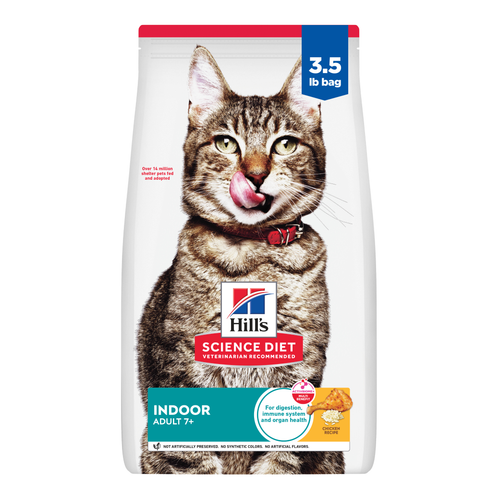

If not properly addressed, urinating outside the litter box, also known as inappropriate urination, can affect your home's cleanliness and safety and your bond with your cat.
Sadly, many cats are relinquished to shelters for this reason. In fact, inappropriate elimination is the No. 1 behavioral problem reported in cats. This common concern has several potential causes, ranging from stress to urinary tract infections (UTIs). But how do cats get urinary tract infections? Can changing cat food cause a UTI? Learn all about feline lower urinary tract disease (FLUTD) to get to the bottom of these and other common questions, including how to support your cat's urinary health.
What Is Feline Lower Urinary Tract Disease?
A cat's lower urinary tract consists of the bladder, urethra and genitals. Feline lower urinary tract disease is a general term for any issues related to these structures.
What Causes Feline Lower Urinary Tract Disease?
Several health conditions can affect a cat's urinary tract, including:
UTIs
Bladder stones or crystals
Urethra blockages
Trauma to the urinary tract
Anatomical abnormalities
Neurological disorders
-
Can a UTI Kill a Cat?
While UTIs are fairly infrequent in cats, they're one of the more widely recognized causes of urinary tract disease on this list — perhaps because they're so common in humans. So, many pet parents worry about this issue. In most cases, UTIs aren't fatal. However, if left untreated, a UTI can lead to life-threatening complications, such as kidney failure or a blocked urethra.
Typically affecting male cats, urinary blockages are considered an emergency. If your cat exhibits any warning signs of feline urinary issues (found later in this article), contact your veterinarian immediately for instructions on what to do.

What's Stress Got to Do With It?
FIC is a common cause of urinary problems, often diagnosed by ruling out other causes of urinary tract disease. In simple terms, FIC occurs due to a defect in how cats handle stress. In susceptible cats, exposure to stress can result in bladder inflammation, leading to painful urination and litter box problems.
Risks factors associated with FIC include:
Age
Cats between 2 and 7 years old may be at increased risk compared to cats younger than 1 year old.
Lifestyle
Indoor cats are at higher risk, perhaps in part due to decreased activity and hunting behaviors.
Weight
Being overweight is associated with an increased incidence of FIC.
Number of Cats
Multiple pet households can cause bullying or competition between cats and limit access to resources.
Hydration
According to the review in Frontiers in Veterinary Science, studies show cats with FIC tend to drink less water than control cats.
Sources of Stress
Other sources of stress — such as house guests, home renovations, travel and lack of places to rest or hide — can also contribute to increased risk of FIC.
What Are the Signs of Feline Lower Urinary Tract Disease?
Signs of urinary tract disease in cats may include:
Urinating outside the litter box
Straining to urinate
Urinating more frequently, usually passing small amounts at a time
Vocalizing (e.g., howling or crying) when urinating
Licking the genital area
Producing pink, dark or bloody urine
Eating less
Lacking energy or interest in normal activities
Changing behavior (e.g., increased aggression or hiding)
How Is Feline Lower Urinary Tract Disease Treated?
Treatment of urinary problems depends on the cause. If your cat has a UTI, for example, your veterinarian will prescribe antibiotics. If they have bladder stones, your vet may recommend nutritional changes or, in some cases, surgery. Treatment for stress-related bladder problems can include stress-reducing environmental modification and pain medication.
How to Support Your Cat's Urinary Health
Here's how you can take action to support your cat's urinary health.
Ask Your Vet About the Best Food for Your Cat
Pet parents often have many questions regarding nutritional causes of urinary tract disease in cats, such as:
Do cat treats cause urinary problems?
Does wet cat food cause urinary problems?
Can changing cat food cause a UTI?
While nutrition plays a role in urinary health, feeding your cat treats or offering them wet food won't single-handedly cause a urinary disorder. In fact, wet food can increase water intake if your cat isn't drinking enough, which can support urinary health. It's possible that abruptly switching foods could contribute to a UTI by increasing stress or affecting urine pH. However, transitioning your cat's food gradually to a balanced, vet-recommended formula is unlikely to cause a UTI.
If your cat has been diagnosed with a urinary tract condition, your veterinarian can help you choose a complete and balanced food that supports urinary health.

Encourage Proper Hydration
In the wild, cats get most of their hydration from prey. So, some kitties need encouragement to stay hydrated. You can support healthy hydration by offering a water fountain, providing multiple clean water sources, feeding them canned food and/or flavoring their water with tuna juice or low-sodium animal broth. Just make sure to change the water daily.
Provide Environmental Enrichment
To prevent stress-related urinary concerns like FIC, make your home as relaxing as possible through environmental enrichment.
Ensure each cat has their own resources, including a litter box, food and water bowls, scratching posts, toys and resting areas.
Create ample vertical and horizontal scratching opportunities in your cat's preferred material (e.g., sisal rope or cardboard).
Provide perches for them to observe their home from up high.
Play with your cat to encourage "hunting" and activity.
Work With Your Vet
Work with your vet to prevent urinary problems in your cat. They can check your cat to ensure they're free from predisposing factors that may cause urinary disease. They can also provide tips and advice to reduce the likelihood of urinary problems. With the right home environment, proper veterinary care and balanced nutrition, you can help your cat stay healthy. That way, you can focus on what you love about your relationship with your cat: companionship and cuddles.






















